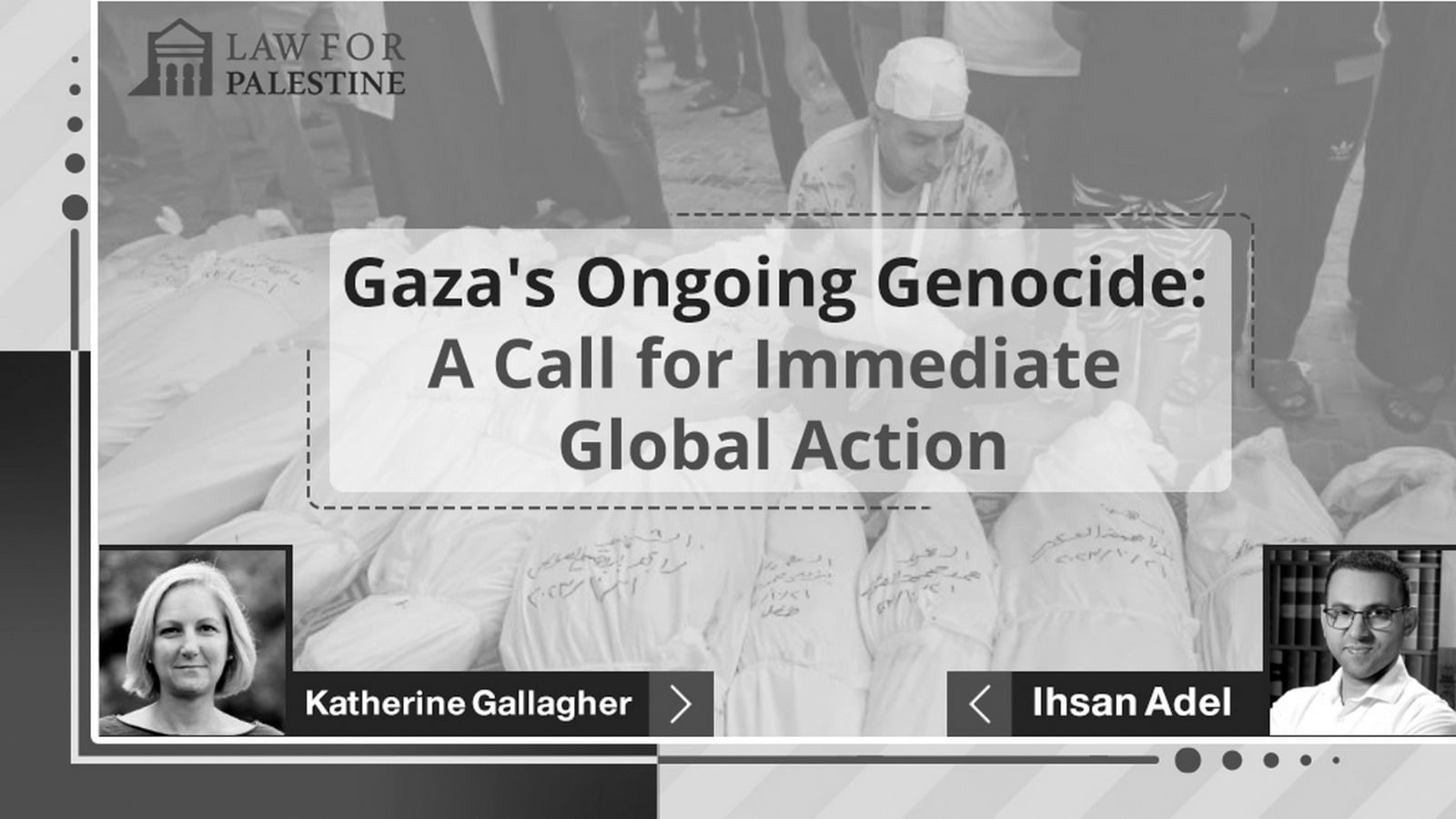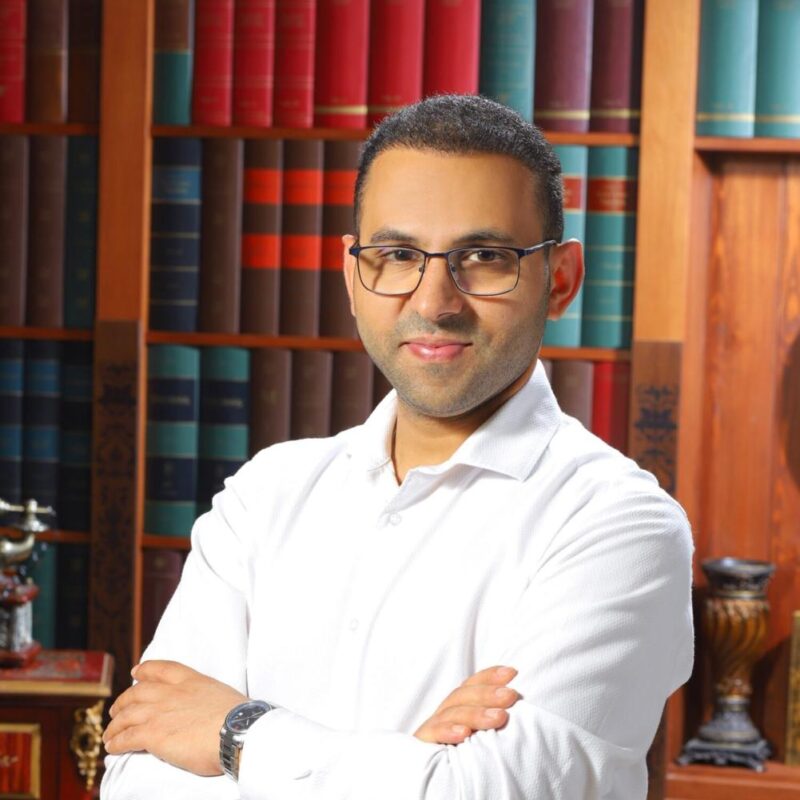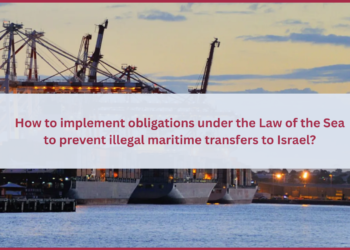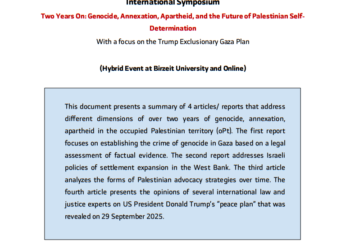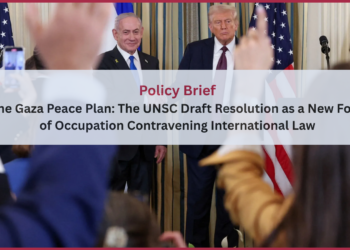Gaza’s Ongoing Genocide A Call for Immediate Global Action
Written by:
Ihsan Adel
Founder and chair of Law for Palestine
Katherine Gallagher
Senior staff attorney at the Center for Constitutional Rights
To download this article an a printable pdf document, click here
Introduction
In the eye of the storm, 800 eminent scholars and genocide experts, including Jewish scholars, recently sounded the alarm, warning the world of an imminent genocide looming in the Gaza Strip at the hands of Israeli forces. This clarion call for action is as unprecedented as the dire situation itself.
What marks this warning as both powerful and chilling is the realization that even scholars who would have been unimaginable signatories a few years ago have come to a somber consensus. It is not a claim made lightly, but the unfolding reality on the ground compels us to confront this harrowing truth.
And since that warning, the situation in Gaza has only gotten worse. The death toll continues to rise, exacerbated by the severe strain on medical facilities caused by fuel and electricity shortages. The destruction of internet access further isolates the population. The ground invasion of the small Gaza Strip has only intensified the suffering of the already displaced, shell-shocked and terrified population of the blockade area.
The Anatomy of Genocide
To understand the magnitude of what is transpiring in Gaza, we must turn to the key legal frameworks that define genocide. Article 6 of the Rome Statute for the International Criminal Court and Article 2 of the Genocide Convention provide the blueprint. Genocide involves acts committed with the specific intent to destroy, either in whole or in part, a national, ethnic, racial, or religious group. These acts encompass killing members of the group, causing them serious harm, and imposing conditions of life aimed at physical destruction of the group in whole or in part, among other underlying acts. Notably, the “group” targeted can be a geographically limited part of the group, such as the 2.2 million Palestinians in Gaza.
Gaza’s devastating reality mirrors the components of genocide, as Israeli actions and rhetoric paint an annihilatory picture. Despite some occasional claims that it is only targeting Hamas, Israel’s conduct reveals an all-out assault on the whole population of Gaza. In just the first week of this relentless assault, over 6,000 bombs rained down on Gaza—nearly equivalent to what the US dropped on Afghanistan in a full year. Yet, it is essential to remember that Gaza is a compact city (365 km2) recognized as one of the most densely populated places in the world. This, in itself, paints a grave image. Israeli Prime Minister Netanyahu’s ominous declaration that this is “only the beginning” leaves us to ponder what the “end” might entail in his vision.
Actions of Genocide Unfolding
The harrowing scenes on the ground indicate that what we are witnessing is undeniably a genocide. Over 45% of homes destroyed or damaged, displacing over 1 million civilians. At the time of writing this piece, the death toll has way passed 10,000, with over 4,400 children and 2,900 women among the victims. An alarming 2,650 individuals, including approximately 1,400 children, are reported missing, potentially trapped or deceased beneath the rubble. Furthermore, tens of thousands of wounded are overwhelming medical facilities.
Gaza remains under a complete siege, with “no electricity, no food, no water, no gas,” as dictated by the Israeli Defense Minister. Israel’s bombing of hospitals, the targeting of their solar panels and the blocking of fuel deliveries indicate an intent to prevent Palestinians from accessing life-saving health care. More than one-third of hospitals and two-thirds of primary healthcare in Gaza have already shut down. The Israeli refusal to allow adequate amounts of much needed humanitarian aid – including food and water – indicates it is willing to allow the Palestinian population to succumb to starvation and disease.
Making matters worse, Israeli directives now mandate large-scale evacuations across Gaza. Some residents are unable to flee due to access issues, disabilities, or the sheer refusal to be uprooted again. For Gaza’s substantial refugee population, these scenes evoke painful memories of past dislocations and the Nakba.
Huda Abu Daqqa, who has her family in Gaza, poignantly described how entire neighborhoods, including iconic landmarks and central zones, have been reduced to rubble. She says, “Even my town, when we saw videos of it, I couldn’t recognize it. I was watching, and I only recognized it when I saw a monument that had the name of my town.”
The Intent of Genocide in Rhetoric
Genocide stands apart from other crimes and declared to be “the crime of all crimes”, requiring an intent to destroy a group of people, in whole or in part, regardless of the number actually killed. In this regard, Israeli rhetoric over the past weeks is particularly alarming. Official statements employ dehumanizing language towards Palestinians, indicating a troubling intent to commit war crimes, crimes against humanity, and, indeed, genocide.
Israeli Defense Minister Yoav Gallant’s shocking reference to Palestinians as “human animals” on October 9th, coupled with his announcement of unrestricted military action, strongly suggests an intent to widely kill and destroy the Palestinian population in Gaza. The head of the Israeli army’s Coordinator of Government Activities in the Territories (COGAT), Maj. Gen. Ghassan Alian, followed suit, threatening Gaza residents: “You wanted hell, you will get hell.” Other Israeli figures echo this rhetoric. On October 29, Israeli Prime Minister Benjamin Netanyahu used Judaic scripture to justify the killing of Palestinians. “You must remember what Amalek did to you, says our Holy Bible,” he said, quoting a verse that goes on to say: “now go and smite Amalek…kill both man and woman, infant”.
The presence of public banners in Israeli cities advocating for the “annihilation of Gaza” raises concerns about the intensity of this sentiment within some segments of Israeli society. Despite some occasional claims that the sole target is Hamas, the widespread destruction and impact on civilians underline that the aim goes far beyond simply the claimed right of self-defense.
On November 5, Israeli Heritage Minister Amihai Eliyahu said that one of Israel’s options in Gaza is to drop a nuclear bomb. He also explained that no humanitarian aid should be provided to Palestinian civilians as “there is no such thing as uninvolved civilians in Gaza”. While his statement faced criticism from Israeli officials, the concerns raised were primarily centered around the potential impact on “Israel’s image” rather than acknowledging the grave implications of such remarks as a potential tool of genocide.
In the words of genocide expert and survivor of the Bosnian Genocide, Arnessa Buljusmic-Kastura, “That sort of rhetoric is not uncommon when it comes to cases of genocide. It is obviously one of the most important stages when you really consider it, and to hear the openly dehumanising language spoken with so much fervour in the media from government leaders, and from regular people too, is horrifying and it all leads us to where we are at right now, which is the fact that what is happening in Gaza is a genocide.
The Gaza/Palestinian Genocide Paradigm
While the Gaza/Palestinian genocide have common central features with other previous situations of genocide, but there are also particular elements unique to it. Among these distinct features are the enduring occupation, the relentless siege, the staggering proportion of the nation already displaced, and the repeated misuse of Holocaust discourse by Israel and some of its allies. This twisted narrative wrongly paints Palestinians as equivalent to the very criminals history condemns.
Under the guise of what has been termed the the Nazification of Palestinians, Israel, the powerful state with settler colonial rule and the longest occupation in modern history, is portrayed as a victim state in the face of the unadulterated evil, inhumane Palestinians-as-“Nazis.”
Additionally, at the heart of this tragedy lies a discourse of dehumanization, serving both as a strategy and an outcome, much akin to the tactics witnessed in other instances of genocide. The longstanding anti-Palestinian discourse, ongoing since the inception of Zionism, has systematically denied the existence and rights of Palestinians. The narrative of “a land without a people, for a people without a land” has effectively erased an entire population, along with their shared history, heritage, and grievances.
It’s imperative to grasp this distinct aspect and acknowledge the need for a more comprehensive understanding of the factors at play as we confront and respond to the crisis in Gaza. This escalating crisis is not an isolated incident but part of a long history of Israeli actions against Palestinians, extending beyond the Gaza Strip, with genocidal intent and practices targeting other Palestinian communities, as notably observed in the West Bank, with the explicit calls to wipe out entire villages. The ghosts of previous acts of genocide committed against Palestinians, as recognized by the UN General Assembly in 1982, loom again over them.
Warnings are increasing: from past to present
Even before the current escalation, the Gaza Strip had been a subject of concern, prompting discussions about the potential for genocide. Bodies like the National Lawyers Guild, the Russell Tribunal on Palestine, and the Center for Constitutional Rights have all raised alarm bells over the years. Holocaust and genocide studies scholars’analysis have found that Israel’s actions and official statements align with the definition of genocide outlined in the Genocide Convention.
And in light of the current situation, UN Special Rapporteur Francesca Albanese has expressed grave concerns, suggesting that the ongoing situation may resemble the Nakba of 1948 and the Naksa of 1967, albeit on a larger scale. She stresses on the international community’s duty to prevent such a recurrence, highlighting that Israel’s self-defense justifications may, in reality, amount to ethnic cleansing. A group of independent United Nations experts recently issued a warning of genocide, echoing dozens of previous alerts from Palestinian human rights organizations since the beginning of the recent events.
A Call to Action: Never Again is Now
The events of 7th October was met by a total shock from the international community including Western officials and media, who apparently did not see any of this coming from an almost two decades of siege of more than 2 million people in an open-air prison marked as unliveable since 2020 by the UN. Ignoring this context, the international community inaccurately decided to view the starting point of this escalation as of October 7th, granting a green light for Israel to use its full power against the 2.2 million Palestinians in the besieged Gaza Strip, almost half of whom are under 18. Talks about self-defence for Israel dominated the rhetoric of Western politics, with minimal consideration for human lives and adherence to the rules of armed conflict, let alone the 56-year belligerent occupation and 16-year siege of Gaza. This constitutes a fundamental flaw in the appraisal of these events, and, consequently, the ability to address their root causes, as subtly alluded to by the UN Secretary-General during his recent address to the Security Council. This deviation from the western narrative, unsurprisingly, provoked Israel’s vehement protest, for this narrative contradicts the dehumanizing rhetoric that Israel relies upon to justify its genocidal actions.
The lessons of the Holocaust were meant to serve as safeguards against state violence and genocide, particularly for vulnerable groups like the Palestinians. What we are witnessing today, however, is an unprecedented global dehumanization campaign against Palestinians, pushing their narratives, experiences, and histories to the margins. Historically, the initiation of such campaigns has often been a precursor to genocide. Therefore, it is imperative to restore the Palestinian people humanity, recognize their shared history and rights, as a people, and put an end to the unfolding genocide happening before our eyes.
We are witnessing a rapidly growing anti-Palestinian sentiment not only in Israel but also in many European countries, clearly visible in how the authorities are dealing with demonstrations and support for the Palestinian people. It is incumbent upon the international community to address this with the same vigour as anti-Semitism, recognising the dangerous consequences that these actions entail.
While the 1949 Geneva Conventions require all state parties “to respect and ensure respect” of these conventions in all circumstances, the Genocide Convention places a legal obligation on every member state to prevent and punish even the attempt to commit this heinous crime, without waiting for it to fully manifest—a grim reality that we are witnessing today.
Never again” was meant to be a warning for future generations, yet we have seen genocides occur since the Holocaust, met with global silence. It’s time to make “never again” a living principle, an urgent call to action.
In Gaza, “never again” is now.


